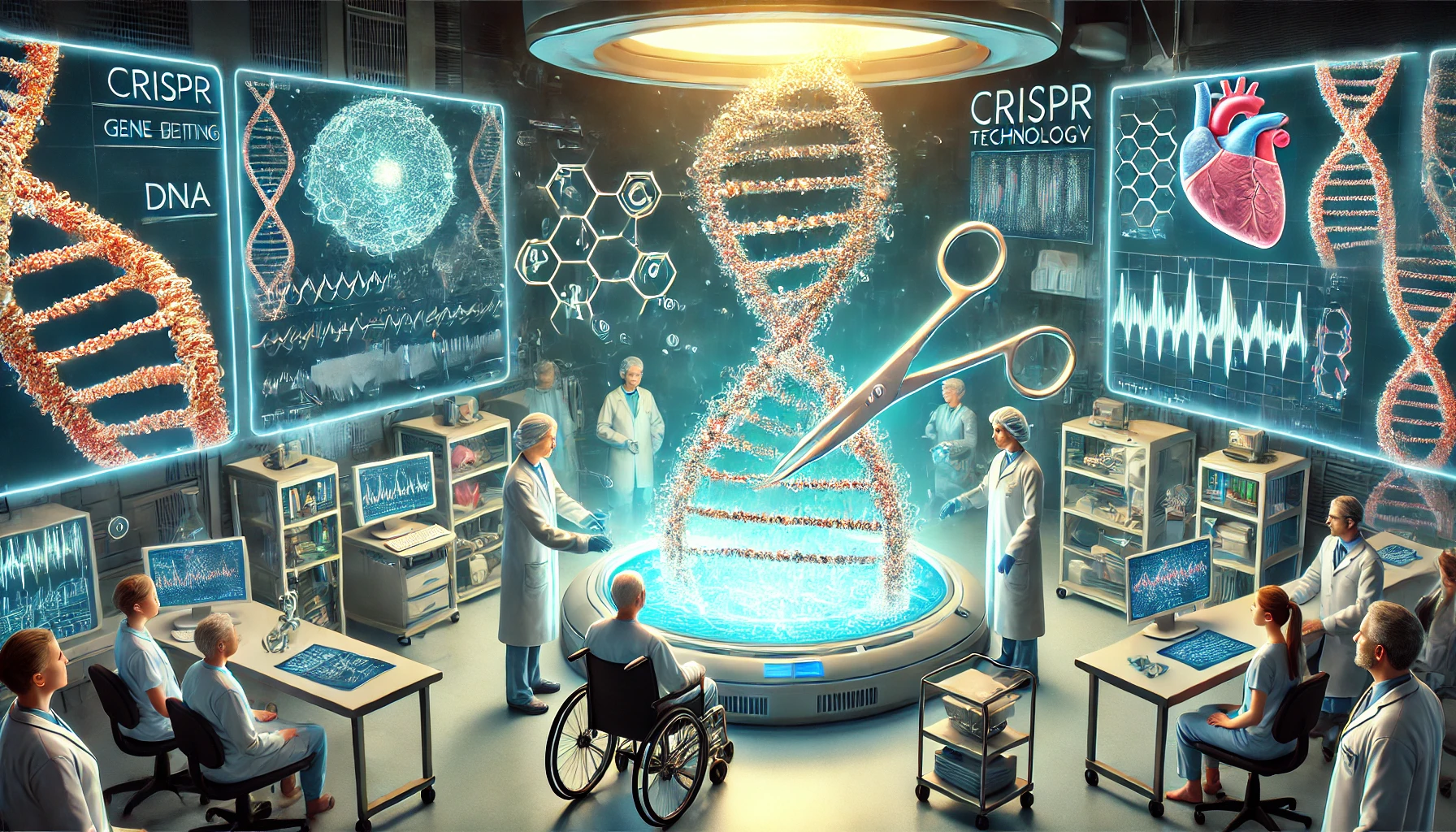CRISPR's Next Frontier: Gene Editing and Its Promise in Treating Rare Genetic Disorders

CRISPR: From Lab Curiosity to Medical Marvel
In the world of science and medicine, CRISPR is like the star athlete who suddenly becomes the talk of the town. This gene-editing technology has leaped from the lab bench to the forefront of medicine, promising to tackle some of the most challenging genetic disorders. But what exactly is CRISPR, and why is it making headlines? At its core, CRISPR is a tool that allows scientists to make precise edits to DNA, which is the genetic instruction manual for our bodies. Think of it like a pair of molecular scissors that can snip out faulty parts of the genetic code and potentially replace them with the right ones. While CRISPR initially gained fame for its potential in agriculture and scientific research, it has now set its sights on an even more ambitious goal: treating rare genetic disorders.
CRISPR and Rare Genetic Disorders: A Match Made in Genetic Heaven
When we talk about rare genetic disorders, we're referring to conditions that affect only a small percentage of the population. Some of these disorders have no effective treatments, leaving patients with limited options and a lifetime of medical challenges. Enter CRISPR, which scientists are now exploring as a potential game-changer. Imagine being able to correct the very DNA mutations that cause these diseases. It's not just science fiction anymore. For example, CRISPR has been used in clinical trials to treat disorders like sickle cell anemia and beta-thalassemia, both of which are caused by mutations in a single gene. By editing that gene, CRISPR offers the possibility of curing the disease at its root cause. Of course, CRISPR's journey from the lab to the clinic hasn't been without its bumps. Like any new technology, there are challenges to overcome, such as making sure that gene edits are safe, precise, and permanent. But the potential benefits are huge, and scientists are optimistic.
The Process: How CRISPR Actually Works
So, how does CRISPR work its magic? It starts with identifying the specific gene mutation causing the disorder. Once pinpointed, scientists use a guide RNA—a sort of genetic GPS—to direct the CRISPR enzyme to the exact location in the DNA where the mutation exists. Once there, CRISPR's molecular scissors cut the DNA, allowing the cell's natural repair processes to either remove or correct the mutation. Sounds easy, right? Well, not quite. While the process works well in a lab setting, the challenge is ensuring it works safely in human patients. Scientists are still fine-tuning the technology to avoid off-target effects—basically, making sure CRISPR doesn't go rogue and start editing the wrong parts of the DNA. But with ongoing research and clinical trials, CRISPR's precision is improving, bringing us closer to using it as a standard treatment for genetic disorders.
Real-Life Success Stories: CRISPR’s Breakthroughs
Let’s talk about the success stories that are already turning heads in the medical community. One of the most exciting developments is CRISPR’s use in treating sickle cell disease. Patients who have undergone experimental CRISPR treatments have seen significant improvements in their symptoms, with some even reporting complete remission of the disease. Another groundbreaking area is CRISPR’s potential in treating muscular dystrophy, a condition that weakens muscles over time. By editing the faulty genes responsible for this disorder, scientists are hopeful that CRISPR could offer a long-term solution for patients. These stories are just the beginning. As more trials progress, we may see CRISPR being used to tackle an even wider array of genetic disorders, from cystic fibrosis to Huntington’s disease.
The Ethical Debate: Should We Play with Genes?
As with any powerful technology, CRISPR has sparked its fair share of ethical debates. On one hand, the ability to edit genes to cure diseases sounds like something out of a utopia. But on the other hand, it raises questions about the limits of gene editing. Should we be able to edit the genes of unborn babies to prevent disease? What about using CRISPR for enhancements, like increasing intelligence or physical abilities? While CRISPR offers amazing potential to treat rare genetic disorders, these ethical concerns cannot be ignored. For now, scientists are focused on using the technology for therapeutic purposes only, but the debate is far from over. As CRISPR continues to evolve, society will need to navigate the fine line between medical treatment and genetic enhancement.
What’s Next for CRISPR?
The future of CRISPR is looking brighter than ever. As the technology becomes more refined, we can expect to see even more clinical trials, with the hope that CRISPR-based treatments will soon become widely available. There’s also a push to make CRISPR more affordable and accessible, so that patients with rare genetic disorders around the world can benefit. Additionally, scientists are exploring ways to improve CRISPR’s precision even further, reducing the risk of unintended gene edits. As we look ahead, CRISPR could very well become a standard tool in the fight against not only rare genetic disorders, but also more common diseases like cancer and heart disease.
Will CRISPR Revolutionize Medicine as We Know It?
With all these advancements, one thing is clear: CRISPR is poised to revolutionize the way we treat genetic disorders. But the question remains—are we ready for a world where we can edit our own DNA? The potential is exciting, but it also requires careful consideration. What do you think? Should we embrace CRISPR as the future of medicine, or proceed with caution? Only time will tell.



